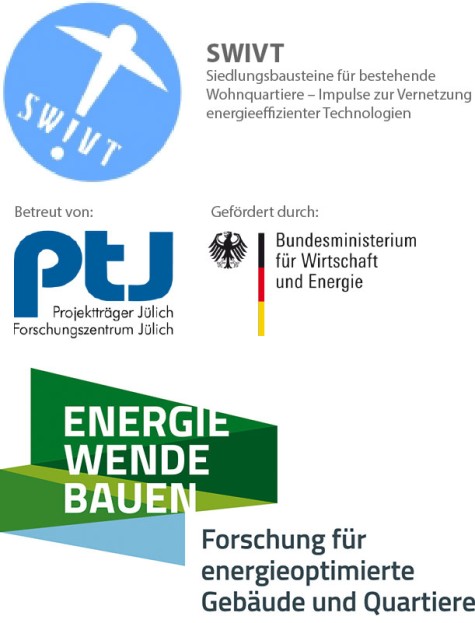SWIVT I
Period: 2014-2017
Funded: BMWi
The existing housing stock represents the critical mass for the energy policy goals of the next decades. The aim of the SWIVT research project is the development of a combined energy and renovation concept for existing housing estates using new types of energy technologies. A consideration on settlement level has the advantage that not each building on its own, but a group of buildings together forms an energetic unit. The approach pursued here provides for the densification of an existing housing estate with an energy-positive settlement building block, which enables efficient decentralized energy generation and distribution. In addition to high-quality living space, this building block consists of innovative components for the generation, storage and networking of electricity and heat, as well as an intelligent thermoelectric control concept. As a result, the energy balance of the settlement can be significantly improved in one step, with minimal intervention in the existing building stock at the same time. The settlement building block also acts as a generator of sustainable neighbourhood development by improving the acceptance of innovative technologies, such as energy storage systems.
As part of the SWIVT project, the IMS has designed and implemented a hybrid energy storage system consisting of a kinetic energy storage system based on outer rotor design and a lithium-ion battery. In addition to the overall mechatronic concept and the integration of all subsystems, the focus was on various individual technologies such as magnetic bearings.
Besides the hardware implementation, a concept for an integrated optimization and control system for the energy system of the research settlement was developed at the IMS as part of SWIVT and implemented in the first stages.
Work on both the hybrid storage system and the optimization and control system will be continued as part of the follow-up project SWIVT II in order to accelerate the implementation in the real settlement.
Contact: Georg Franke
Further information you can find on the Project website.


